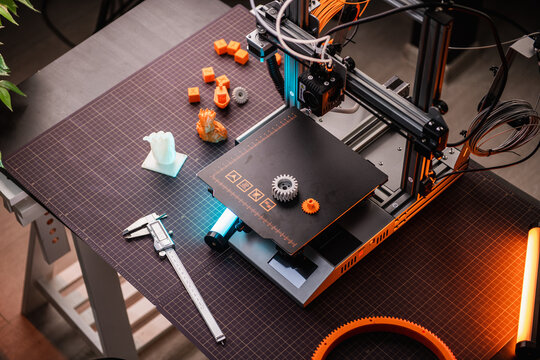Printing the Object:
The printer reads the G-code file and begins the printing process.
Heating the Filament The printer’s extruder heats the thermoplastic filament (usually PLA, ABS, PETG, etc.) to a specific temperature, melting it into a semi-liquid state.
Extrusion The melted filament is extruded through a small nozzle onto the build platform. The printer starts at the bottom layer and works its way up, following the G-code instructions.
Layer-by-Layer Construction The printer builds the object layer by layer. Each layer fuses to the one below it as the filament cools and solidifies.
Movement The printer’s print head (or bed) moves in the X, Y, and Z directions to position the nozzle accurately as it lays down each layer.
Cooling and Solidification:
As the filament is deposited, it begins to cool and solidify almost immediately. Some printers use fans to speed up this process, ensuring that each layer is firm enough to support the next.
Finishing the Print Once all layers are completed, the printer finishes the print, and the object can be removed from the build platform.
Post-Processing: Depending on the quality and purpose of the print, additional steps such as sanding, painting, or assembling parts might be required.
Key Components of an FDM 3D Printer
Extruder: The mechanism that feeds the filament into the hot end, where it is melted and extruded through the nozzle.
Hot End: The part of the printer where the filament is melted. It includes the nozzle, heater block, and thermistor (to measure temperature).
Build Platform (Bed): The surface on which the 3D object is printed. Some beds are heated to prevent warping and to improve adhesion.
Stepper Motors: Motors that control the movement of the print head and the build platform in the X, Y, and Z directions.
Frame: The structure that holds all the components together. It’s usually made from metal or sturdy plastic.
